
by Elinor Andersson, EFAS Dissemination Centre
This summary is based on feedback collected during specific contract 3, May 2018 - April 2018. A total of 147 formal notifications were sent out during that period, and 109 event reports were received which accounts for 74% of all issued formal notifications. This is an increase since last specific contract when 71% of the formal flood notifications were reviewed. This is notable since there were only 52 notifications issued for SC2. It is important to note that the following summary is based on the feedback given by EFAS partners. Because of different ways to interpret the questions some graphs may appear contradictory.
The big flooding event in France at the end of 2018 and the beginning of 2018 produced a lot of notifications, and we received the feedback in spreadsheet form. Since not all questions were answered there will only be information from SCAPI about the return period of the event. Because of that, the other metrics will be compared against the total amount of complete feedback received where a flood event was observed (59 feedback submissions).
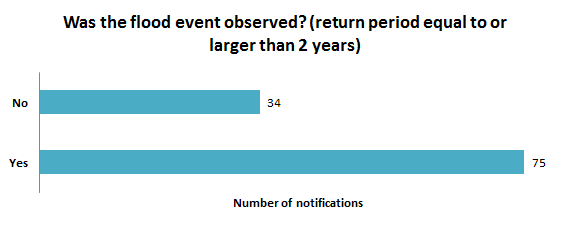
The initial question in the feedback form is whether a flood event was observed regarding the notification (Figure 1). New for this specific contract that the definition for a flood event was included in the question (return period equal to or larger than 2 years) to help partners assess the event. We chose to differentiate between true false alarms and flooding events that happened but did not reach the 5-year return period threshold.
75 out of 109 (approximate 69%) respondents answered that the flood event was observed after a notification had been sent out. Note that a “yes” doesn't guarantee that the flood event exceeded the 5-year return period threshold.

Notification sent where a flooding event was observed
Most of those who answered that the flooding event had occurred (46/59, or 78%) rated the accuracy of EFAS information in terms of location as “Pretty much as indicated in EFAS information” (Figure 2).
29% of those who answered that the flooding event had occurred stated that the flooding event happened on the day predicted by EFAS (Figure 3). Almost half of the respondents reported that the event happened later than predicted (44%).

Almost half (46%) of those who had stated that the flooding event occurred reported that the flooding was comparable to the EFAS prediction (Figure 4). 25% answered that the magnitude was less or much less severe than the EFAS prediction and only 13% stated that the flooding was more or much more severe than the EFAS prediction. 15% did not know the magnitude compared to the EFAS notification. The lead time varied greatly between the different flood events (Figure 5). The mean and median lead time was 5 days. It is notable that so many events had zero days between the notification and start of the event.
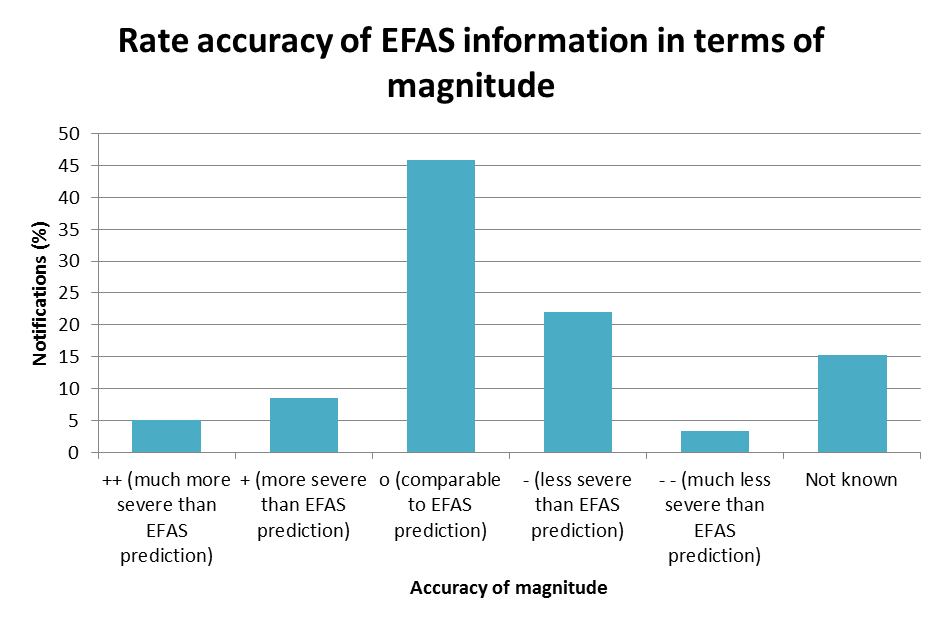
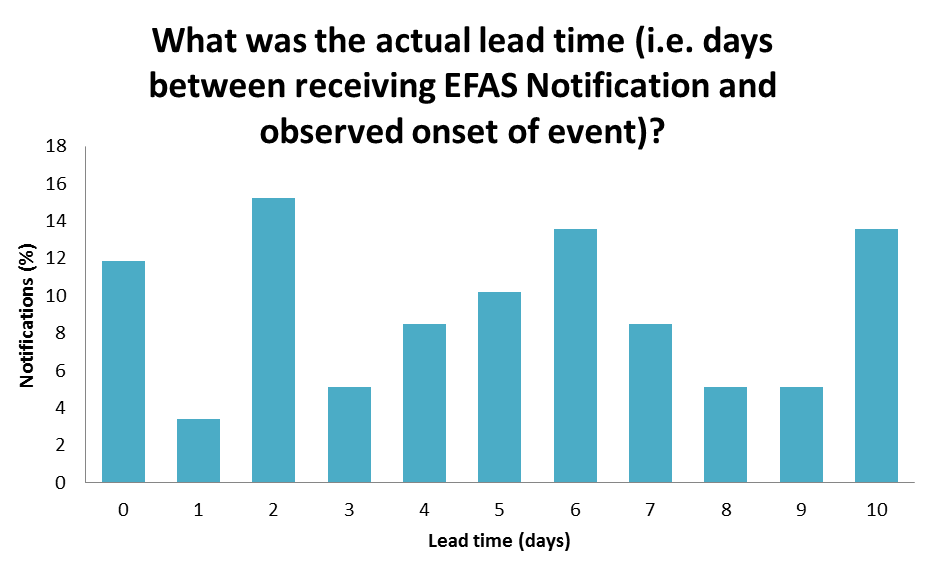
39% of the respondents who reported that the flooding event had occurred stated that the return period of the observed flood event was less than a 5-year return period (Figure 6). Since the criteria for sending out a formal notification is a 5-year return period discharge, it is interesting that so many events were less severe than that. We don’t know which time periods the partners’ use to calculate their return periods. The 5-year return period in EFAS is for example often much lower than the 5-year return period threshold that Sweden uses, probably because of the different time periods used in the calculation. In EFAS, return periods are based on simulated discharges, whereas the EFAS partners base their thresholds on observations. It would maybe be easier for the partners to evaluate the notifications if we asked them to compare the EFAS simulated discharge with their own observed discharge.
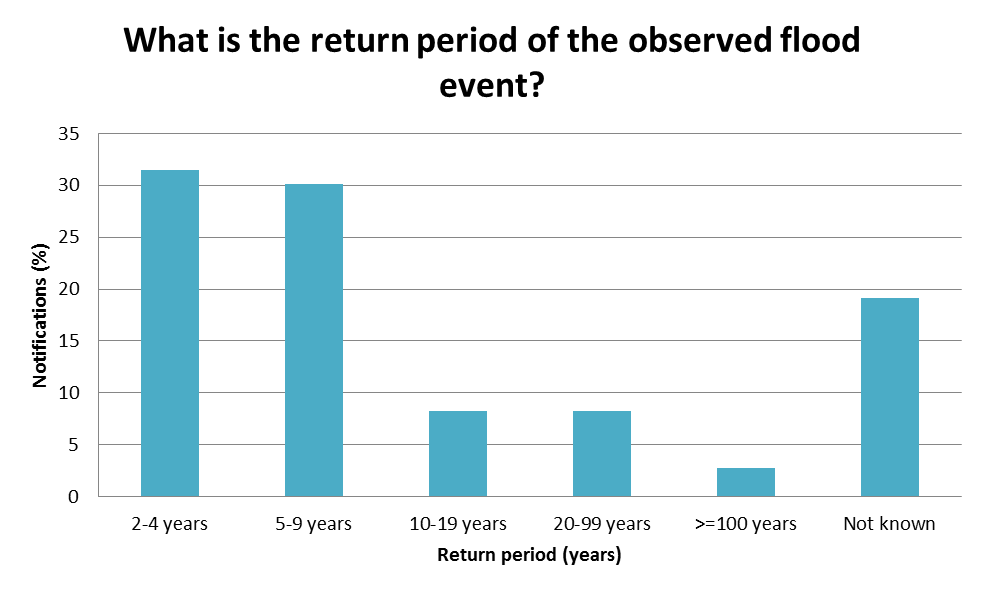
More than a third (42%) of those who had stated that the flooding event had occurred reported the main cause to be snow melt (Figure 7). The second most common cause was extreme rainfall and the third most common was long-term rainfall. If no alternative was suitable to describe the cause, the partners were asked to submit it. The most common answer was that the event was caused by overfull lakes, which forced the release of water downstream.
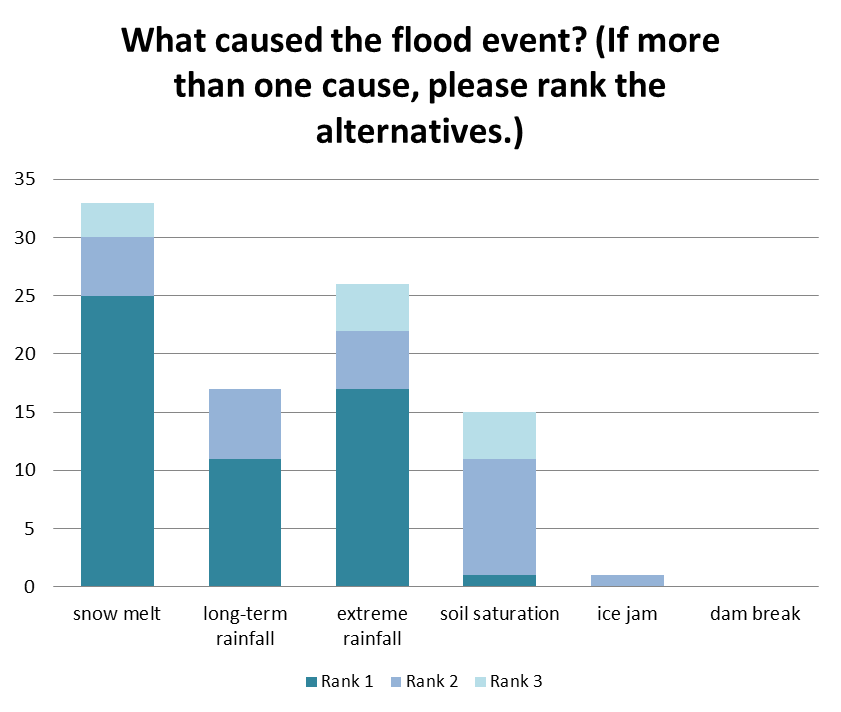
Notification sent but no observed flooding event
The survey recipients were asked if they had any ideas why the event did not occur e.g.: reservoirs, precipitation as snow, precipitation fell in other area, forecasted precipitation did not occur, snow did not melt as fast as predicted. The most common answer was that there wasn’t enough precipitation (Figure 8). Nine feedback reports didn’t explain why the false alarm happened, which may be because they themselves don’t know.

- Most of the survey recipients reported an observed flooding event tied to the sent notification.
- It was much more common that the flood notification indicated a more severe flooding compared to observations than a less severe flooding compared to observations.
- The notifications had good accuracy in terms of location and magnitude. The accuracy in terms of time could be improved. A significant portion of the sent overviews were for ongoing events, which should be investigated. It could be that some of the feedbacks interpret the start of the event differently than the definition of the notifications. Last specific contract, we tried to improve this by adding the definition in the question.
- A majority stated that the return period of the observed flood event was less than five. It would maybe be of use to define the actual discharge value to be evaluated to the partner, so avoid the use of different return period thresholds (see report for more details).
- The most common cause of the flooding events was snow melt.
- The main reason for no observed flooding was believed to be overestimated precipitation.

